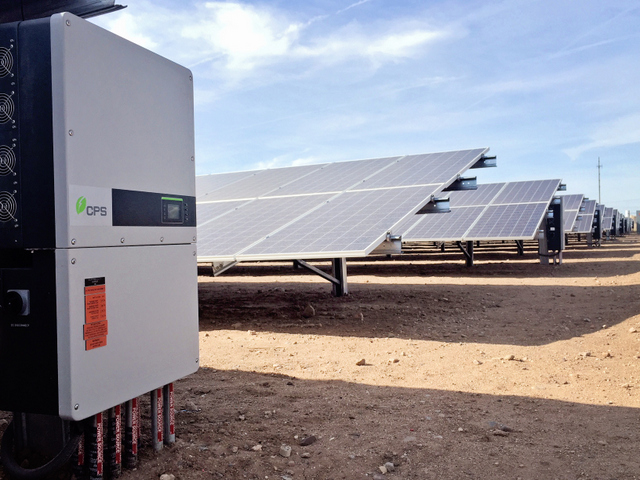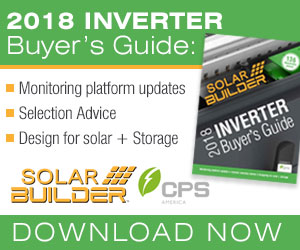String inverters are now a staple of the commercial and industrial and small utility-scale segments, which was solely the domain of central inverters once upon a time. The trend started about six years ago when string inverters souped-up to 1,000 volts and developers and EPCs saw the value in chasing the higher efficiencies, multiple MPPTs and greater energy harvest rewards provided by distributed string architecture.
But two years ago, the shift to an even lower cost 1,500-volt architecture started, and the math shifted right back to central inverters because 1,500-volt three-phase string inverters weren’t available.
“A year and a half ago, string inverters were about 8 cents per watt and central plus combiners were 6 cents per watt, so that seemed cheaper,” says Ed Heacox, GM, CPS America. “Central plus combiner boxes seemed cheaper.”
But string inverters have souped-up again, and that economic story has flipped again. Instead of string vs. central, the discussion is changing to distributed string vs. “virtual centralized” string. In the Solar Builder Inverter Buyer’s Guide this year, you’ll see a bunch of string inverters in the 100 to 125 kW range, and those that aren’t rated at 1,500 volts will be soon. The cost is now closer to 5 to 6 cents per watt, with central inverters still sitting at a cost per watt similar to two years ago. That aforementioned 3 to 5 MW cap is about to be a thing of the past. CPS has its 1,500-volt product coming out in June and says it is rocketing past that 3 to 5 MW sweet spot.
“We are having regular discussions about projects 20 to 30 MW in size now when before, that was extremely rare,” says Sarah J. Ozga, product manager North America for CPS America. This could possibly go as high as 100 MW in the not-too-distant future.
Now, all costs being equal, some will still gravitate to central inverters because of operations and maintenance preferences: Lots of walking or driving all over to address each O&M issue spread across a 30 MW site, and god help you if the site was mapped incorrectly. String inverters can feel unwieldy if you’re unprepared for them.
“A lot of time O&M depends on the developer or EPC’s personal experience with inverter reliability,” Heacox says. “Those who had a lot of downtime on central, are for sure leaning to string. But those who have had great experiences don’t feel they need to change for projects larger than 5 MW. But some see that if they go down the string path, there is more interchangeability among suppliers with relatively similar products — and the engineering and workload need for swapping out string inverters is a lot easier than reengineering a 3 MW power station.”
In part 2, we will look at two different string solutions that offer the lowest cost path and meet any O&M preferences you may have. We will also dive into this in MUCH greater detail in this upcoming free webinar. Sign up here.
Utility-Scale String Design
Wed, Jun 20, 2018 2:00 PM EDT
When designing a large site one consideration is String or Central. Both have well defined benefits. Historically, the large utility-scale sites have mainly relied upon central inverters. Now a third option, the Virtual Central, is paving the way for string inverters into this space. In this webinar, we will discuss the benefits and disadvantages to both the distributed and centralized string architectures and how the design choice affects installers, developers and site owners. Sign up here.
— Solar Builder magazine



Leave a Reply
You must be logged in to post a comment.